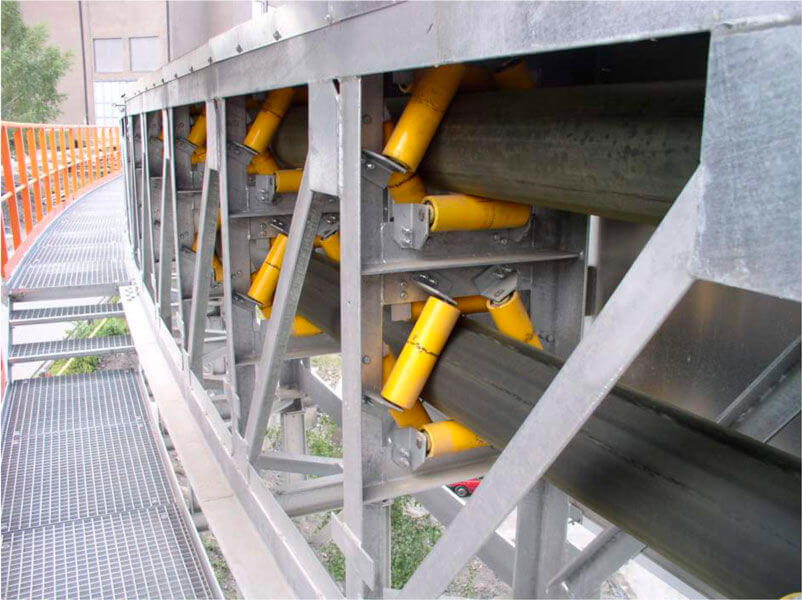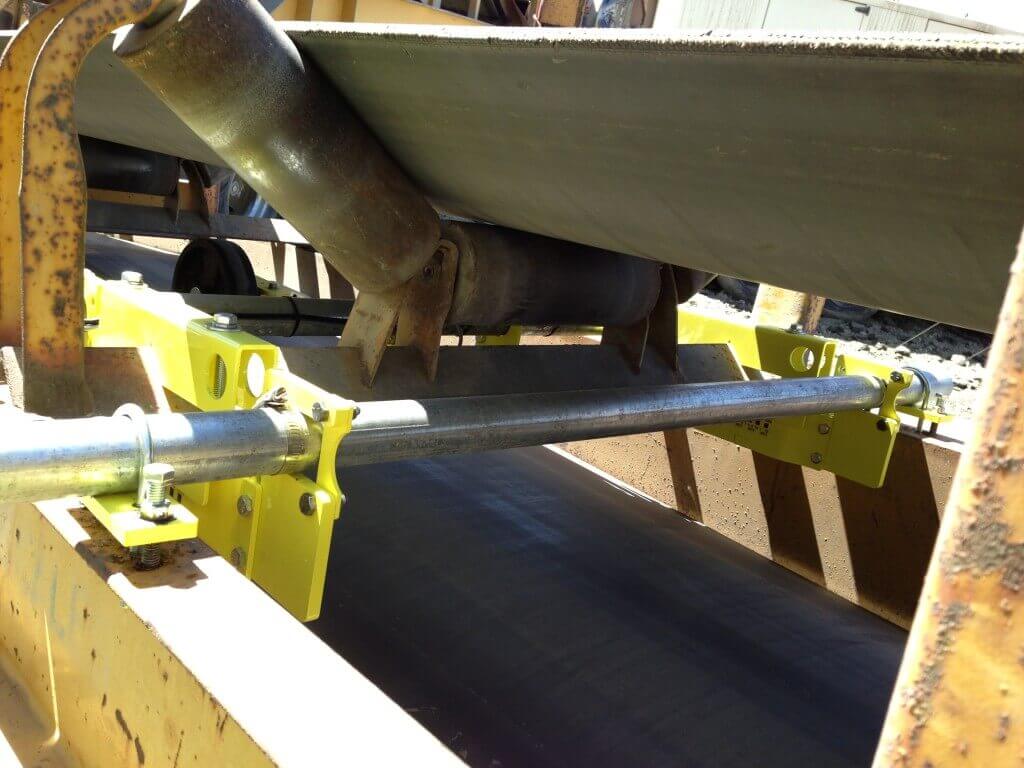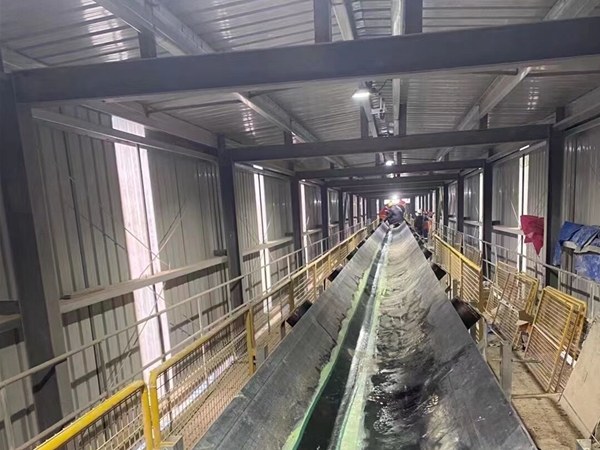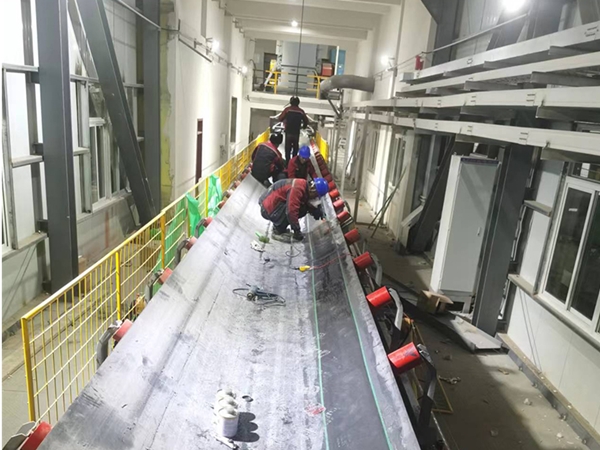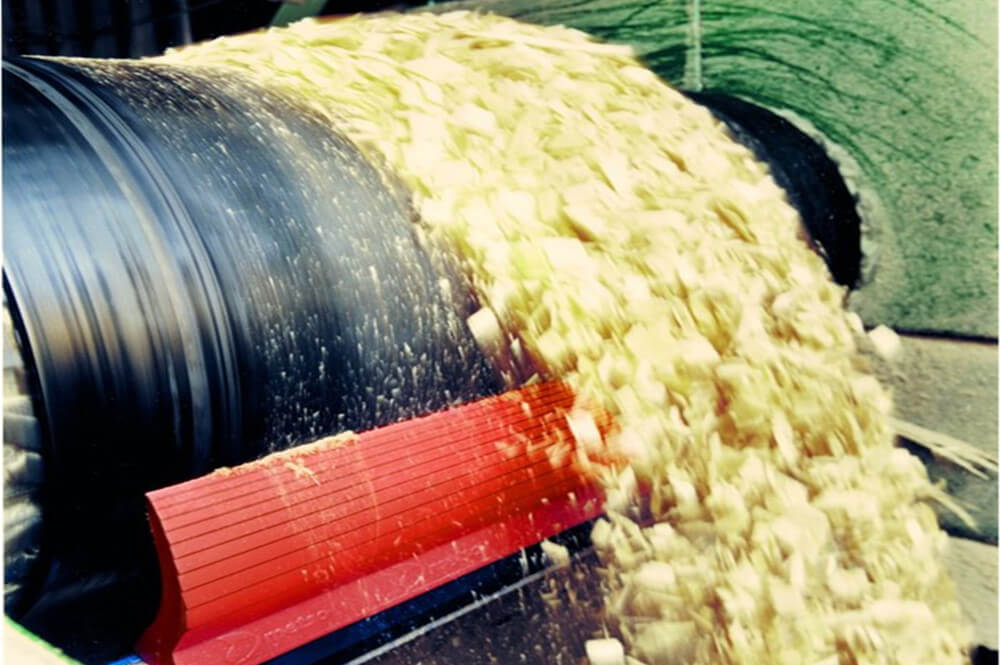The belt can see every ton of product, it’s amazing to be able to last so long. For the same reason, load support can also be seen per ton. Ensuring that the point of load is effectively protected has a great impact on the productivity of the entire system. With the support of the correct load point, you can see the improvement of belt wear, product loss, dust, overflow, mis-operation, and reduce damage to your equipment.
Just like a large pit can damage your tire, a large rock can damage the load support and belt if it exceeds the design capacity. This is why it is important to consider abnormal conditions when you select a support system for the load point. For example, the same belt running 6″ (150mm)-coal, there may also be 300 lbs (140 kg) plates falling on it. It also emphasizes why having the right protection for your load point can help protect your belt and reduce these time-consuming Maintenance issues and limit unplanned downtime in your facility.
1. The challenge of loading points
Once in the affected area, there are several challenges that can be solved to improve the point of load. Each load area needs to consider selecting the appropriate belt support. Sometimes impact rollers are sufficient, while others may require a complex impact bed to provide the required protective belts.
Dust is also an important issue that many industries have to deal with, not only because it poses a major risk to the safety of workers who inhale dust or other fine powders into the lungs and respiratory tracts, but also because dust is basically a waste product, causing a lot of Time to clean up and maintain damaged equipment. Therefore, when choosing a belt support solution, sealing the load area to prevent dust and spillage will also be a consideration.
In many cases, there is simply not enough support in this area. Some common examples of this problem include not using impact rollers or beds; spaced impact rollers are too far apart, creating a sealing gap, which may cause leakage; catenary rollers have too much “giving”, which can cause belt damage and overflow; And mis-operation caused by eccentric loading at the point of impact.
2. Choose and implement the correct loading point solution
Keeping these issues in mind, you will want to make sure that the belt is continuously supported. A suitable impact bed can solve all these challenges, but you need to make sure that all your specifications are correct. It is important to know and state the maximum material block weight and drop height, as this is to choose the right bed for your application that can handle the toughest conditions.
When the weight of the largest material block is multiplied by the number of descending heights, it will provide the impact of your application. Once you have this information, make sure that the rating of your solution is never lower than the impact you calculated.
All impact beds that are too frequent are placed to fit the receiving conveyor or chute instead of the material flow. When installing an impact solution, you should pay close attention to where the material hits the belt and install the point-of-load solution in such a way that the material flow falls in the center of the point-of-load solution. For example, the impact bed where the material flows on the end of the bar may not reach the specified rating, or premature wear may occur.
Although dust suppression systems are a common choice for many facilities to combat dust, they have their limitations when it comes to the areas they can control. In addition, any product captured by the dust suppression system will not return to the system. Scrap.
A very simple solution is a closed skirting board system. Not all sealing solutions require complex measurement and engineering. Standard skirting components and adjustable mounting arrangements provide universal installation and easy installation, enabling you to protect as few or as many conveyor belts as you need at a lower cost. Nevertheless, if the standard position is not suitable for your application, it can be easily customized to suit the job requirements. In addition, you can capture the product and keep it in the system, thereby limiting cleanup and product waste.
3. Conclusion
It is important to remember that the success of any part of the conveyor is dependent on several different areas of the system. It is for this reason that the evaluation of the entire system can only benefit one action. Some simple changes to the system can increase efficiency and productivity, and reduce the time spent processing numbers to cut costs, so it is also important to evaluate the area before and after the loading point.
A thorough evaluation of your conveyor belt system is not only a simple method that allows you to generate new ideas and increase the productivity of the system. There are many companies that provide evaluation service, find one in your local city.

